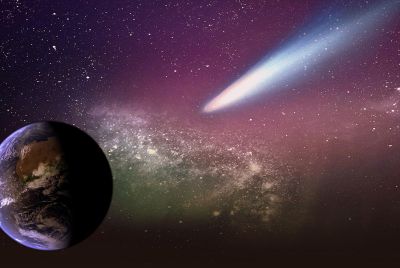3I/ATLAS Comet Safely Passes Earth — No Deviation, No Danger Confirmed
Astronomers tracking 3I/ATLAS reported a stable flight path as the object continued its journey past the Sun, reinforcing confidence in current planetary defence models.

The interstellar comet 3I/ATLAS has safely passed Earth's orbit without any change in its velocity or direction, NASA confirmed on 30 October 2025.
Travelling at a steady 68.3 km/s, the object continues its journey through the inner Solar System, putting to rest online speculation about an Earth-bound trajectory.
The comet's closest approach will occur on 19 December 2025, at a safe 268 million kilometres—roughly twice the distance between Earth and the Sun.
Stable Trajectory, No Acceleration
☄️ 3I/ATLAS remains safely on course — no deviation, no danger.
— Astronomy Vibes (@AstronomyVibes) October 29, 2025
No maneuvering toward Earth; it continues to follow its expected trajectory and hasn’t accelerated beyond 68.3 km/s.
The interstellar object 3I/ATLAS will not collide with Earth — on December 19, it will make its… pic.twitter.com/tJIvtpwvis
Data from NASA's Jet Propulsion Laboratory and the European Space Agency (ESA) confirm that 3I/ATLAS has shown no deviation from its predicted path. Astronomy Vibes' orbital model, shared on X, also displayed a steady, hyperbolic trajectory, proving the comet's natural motion.
Key Takeaways:
- Velocity: 68.3 km/s, unchanged since detection in July 2025
- Closest approach: 268 million km from Earth on 19 December
- Trajectory: Hyperbolic, meaning it will leave the Solar System permanently
'No manoeuvring toward Earth; it continues on its expected trajectory,' NASA stated, reaffirming there is no cause for concern.
Earlier speculation online had raised questions about whether the interstellar object might alter course after its perihelion, the point at which it passes closest to the Sun. However, data from the European Space Agency and NASA's Jet Propulsion Laboratory show that its velocity and direction remain unchanged since it was detected in July 2025.
Astronomers note that such consistency is typical for interstellar visitors that are not gravitationally bound to the Sun. Like previous objects ʻOumuamua and 2I/Borisov, 3I/ATLAS is travelling on a hyperbolic trajectory, meaning it will leave the Solar System permanently once its journey past the Sun is complete.
Scientific Opportunity, Not a Threat
The comet's passage still offers scientists valuable research opportunities. Telescopes worldwide are tracking how 3I/ATLAS reacts to solar radiation and whether its surface shows changes in brightness or gas emissions. The information could help researchers better understand the chemical composition of objects originating outside the Solar System.
ESA scientists describe interstellar objects as 'time capsules' that preserve material from ancient planetary systems. Observing 3I/ATLAS helps refine planetary-defence models and expands understanding of how foreign celestial bodies behave under solar heating.
NASA has reiterated that the object's current trajectory poses no threat to Earth, Venus or Mars. Its minimum separation from Mars occurred in early October, while its alignment with Venus on 3 November 2025 will also remain at a safe 97 million kilometres.
Public Reassurance and Next Steps

The confirmation of 3I/ATLAS's safety follows weeks of speculation on social media about possible anomalies in its movement. Astronomers have urged the public to rely on data from official agencies rather than viral posts or unverified claims.
Researchers will continue monitoring it using the Hubble Space Telescope, ESA's JUICE mission and ground-based observatories across Asia and Europe.
For now, the verdict is clear: 3I/ATLAS remains on its predicted course, with no deviation, acceleration or danger to Earth, a scientific spectacle rather than a cosmic scare.
NASA and ESA have reaffirmed that comet 3I/ATLAS poses no danger to Earth, Mars, or Venus. It will fade from view early next year as it exits the Solar System, leaving behind valuable data for future study.
For scientists, 3I/ATLAS is not a harbinger of doom but a celestial messenger—a reminder of the vast, ancient universe beyond our reach.
© Copyright IBTimes 2025. All rights reserved.



















